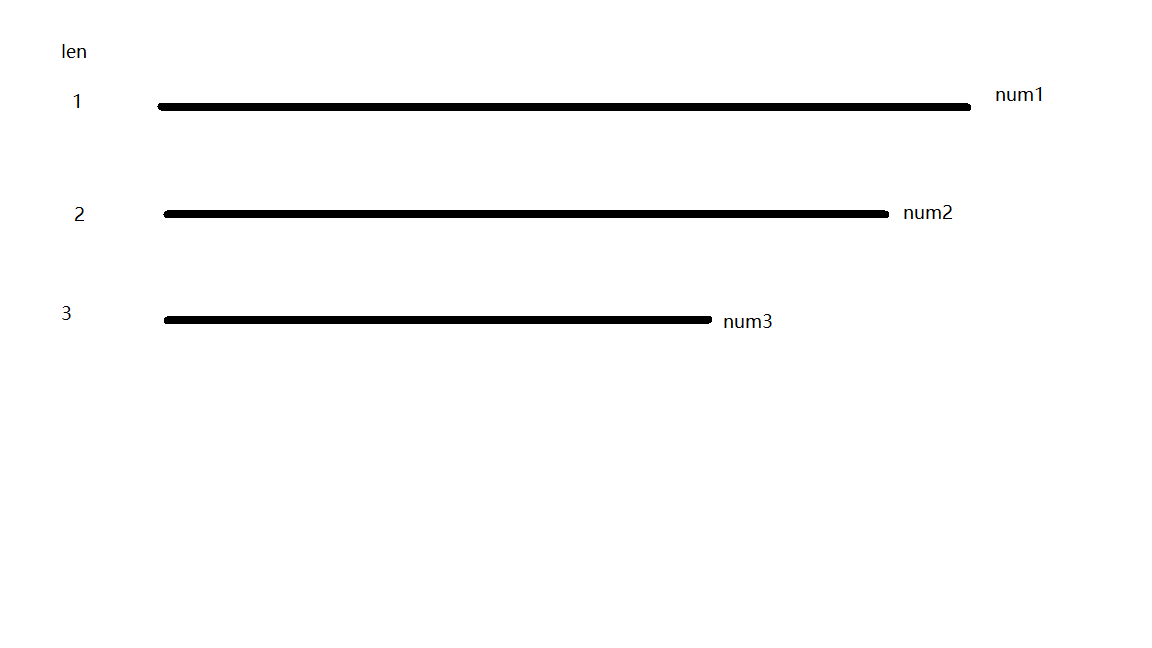CodeForces - 631C
Each month Blake gets the report containing main economic indicators of the company "Blake Technologies". There are n commodities produced by the company. For each of them there is exactly one integer in the final report, that denotes corresponding revenue. Before the report gets to Blake, it passes through the hands of m managers. Each of them may reorder the elements in some order. Namely, the i-th manager either sorts first ri numbers in non-descending or non-ascending order and then passes the report to the manager i + 1, or directly to Blake (if this manager has number i = m).
Employees of the "Blake Technologies" are preparing the report right now. You know the initial sequence ai of length n and the description of each manager, that is value ri and his favourite order. You are asked to speed up the process and determine how the final report will look like.
Input
The first line of the input contains two integers n and m (1 ≤ n, m ≤ 200 000) — the number of commodities in the report and the number of managers, respectively.
The second line contains n integers ai (|ai| ≤ 109) — the initial report before it gets to the first manager.
Then follow m lines with the descriptions of the operations managers are going to perform. The i-th of these lines contains two integers ti and ri (, 1 ≤ ri ≤ n), meaning that the i-th manager sorts the first ri numbers either in the non-descending (if ti = 1) or non-ascending (if ti = 2) order.
Output
Print n integers — the final report, which will be passed to Blake by manager number m.
Examples
3 1
1 2 3
2 2
2 1 3
4 2
1 2 4 3
2 3
1 2
2 4 1 3
Note
In the first sample, the initial report looked like: 1 2 3. After the first manager the first two numbers were transposed: 2 1 3. The report got to Blake in this form.
In the second sample the original report was like this: 1 2 4 3. After the first manager the report changed to: 4 2 1 3. After the second manager the report changed to: 2 4 1 3. This report was handed over to Blake.
---------------------------------------------------------------------
这个解答不错
https://blog.csdn.net/yhyyxt/article/details/50808441
题目大意,输入 n m,n个数,m个操作,接下来是 n 个数,然后操作 1 是前 t 个数从小到大排序,操作 2 是前 t 个数从大到小排序
我们可以发现当目前操作的 t1 比前面的 t2 大时,前面的 t2 操作就无效了。所以我们把那些无效的操作都去掉。
len 表简化操作后的所有操作的下标,num 表长度,最后应该是这样的图

然后遍历所有操作,每次更改的是 num1 到 num2 之间的值,最后 num3 到 0.。。。差不多就这样吧
#include <iostream> #include <cstdio> #include <string> #include <cstring> #include <cmath> #include <sstream> #include <algorithm> #include <set> #include <map> #include <vector> #include <queue> #include <iomanip> #include <stack> using namespace std; typedef long long LL; const int INF = 0x3f3f3f3f; const int MAXN = 200005; const int MOD = 1e9 + 7; #define MemI(x) memset(x, -1, sizeof(x)) #define Mem0(x) memset(x, 0, sizeof(x)) #define MemM(x) memset(x, 0x3f, sizeof(x)) int n, m; int a[MAXN], b[MAXN], ope[MAXN], num[MAXN]; int main() { cin >> n >> m; int i, j; for(i = 1;i <= n;++i) { cin >> a[i]; b[i] = a[i]; } int len = 0, x, y; for(i = 0;i < m;++i) { cin >> x >> y; while(len && y > num[len - 1]) len--; ope[len] = x, num[len++] = y; } num[len] = 0; sort(b + 1, b + 1 + num[0]); int l = 1, r = num[0]; for(i = 1;i <= len;++i) { for(j = num[i - 1];j > num[i];--j) { if(ope[i - 1] == 1) a[j] = b[r--]; else a[j] = b[l++]; // cout << a[j] << endl; } } for(i = 1;i <= n;++i) cout << a[i] << " "; return 0; }


